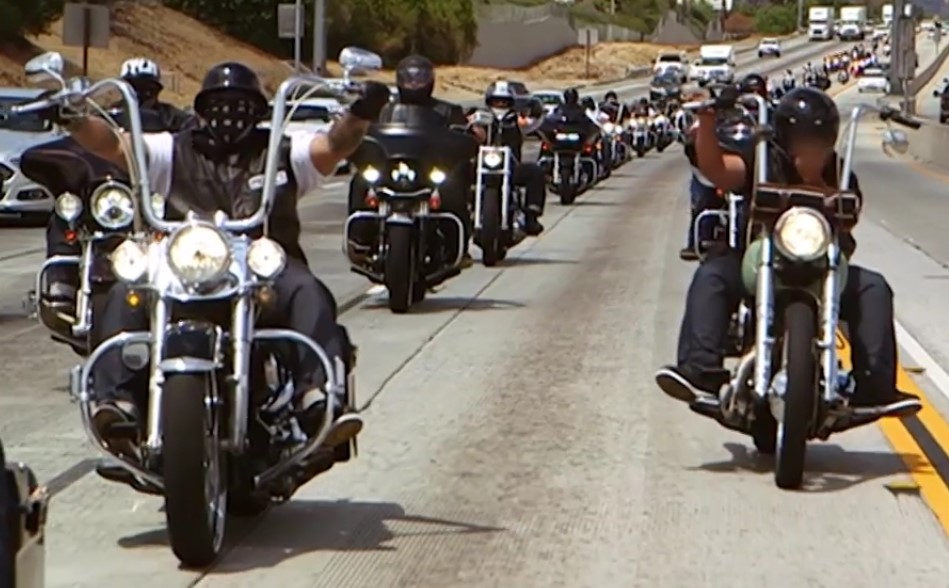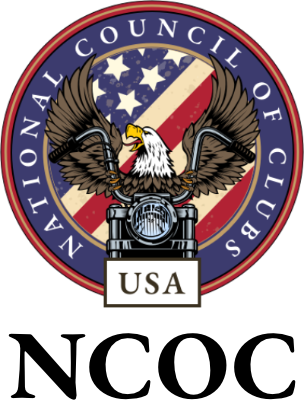William Dulaney, a retired professor at the U.S. Air Force Air Command & Staff College, has conducted extensive research on motorcycle club culture as an observer and a participant. In recent years, he has consulted on many cases in defense of members of motorcycle clubs ranging from illegal weapon charges related to get back whips, to the first Twin Peaks trial. His doctoral degree dissertation focused on the identity and culture of America’s outlaw motorcycle community.
As experienced by Aristotle, Einstein, and countless doctoral dissertations [i], conclusions and perspectives often evolve based on many factors. These factors include time spent in the field of participant observation, more expansive data collection, and expansion of geographic regions analyzed in-depth. The study of motorcycle club culture is no different.
Although Dulaney observed at the time of his initial writings that they were limited by geographic region and time spent in the field of observation, as is common with early academic studies [ii] [iii], some of Dulaney’s most recent observations based on years in the field were documented in a piece for CNN. [iv] He writes, “I’ve spent 15 years researching America’s biker culture and I can say with some authority that the reality of everyday life in motorcycle clubs is neither dangerous nor exciting.” So why might some people have a different view?
Media drives public perception
Dulaney explains, “Americans have a long established canon from which they “learn” about society from fictional dramas. And the more we watch shows like “Sons of Anarchy,” the more a news story will seem to fit our mental construct of “how those people are.” And Dulaney’s research on media coverage of motorcycle clubs shows that when MCs are in the news it’s almost always for something terrible, not the numerous law enforcement abuses or profiling of patch-holders or the mundane everyday experiences of motorcycle club members. He continues, “But here’s the thing: As we watch more crime drama, we perceive that crime is more prevalent than it actually is.”
The Blue Jay Syndrome
A criminal element exists in any large community. There are always “bad seeds.” Dr. Dulaney would not disagree. But he would point to a phenomenon revealed by his recent studies that applies to motorcycle clubs termed The Blue Jay Syndrome. Like a blue jay robbing another’s nest for resources, a tiny percentage of individuals are able to take advantage of the tight-knit structure of a motorcycle club for their own selfish or even criminal purposes, and then flee the nest when they’ve depleted and damaged the structure. [v] Although this is not representative of the vast majority of motorcycle club members across the wide-spectrum of clubs, these false perceptions of widespread criminality are largely drawn by media constructs, both entertainment and sensationalized news.
Findings related to profiling.
Motorcycle profiling, an issue that has gained momentum in recent years and is now a national discussion, has also emerged in Dulaney’s recent observations. He argues, “In over a decade of sifting through discovery evidence and testifying in federal RICO and state gang-enhancement trials across the US a model of law enforcement behavior has emerged. The model is simple: specific federal agents use various federal, state, and local police “motorcycle gang” task forces to profile members and friends of motorcycle clubs. The profiling ranges from pre-textual traffic stops intended to document identities and update gang crime databases to the systematic deprivation of civil rights; with violations of the 1st, 4th, and 14th Amendments being most prevalent.”
A shift to coexistence
Over the past 10 years, as awareness of motorcycle profiling has increased, combined with historical events like Waco, motorcycle club participation in the grassroots motorcycle rights movement has increased as well. Across America, this participation has resulted in more communication and cooperation among motorcycle clubs as it relates to common ground issues like profiling.
In terms of issues related to rivalries among motorcycle clubs, Dulaney’s more recent observations reveal more of a coexistence. At a funeral for a patch-holder killed in Waco, Dulaney witnessed members of “more than 50 other motorcycle clubs come together in peace to mourn the passing of a man who touched the lives of so many in his community. This convergence of contrasting MC’s was no media stunt. There were no media in the funeral that day (although there was one white, unmarked van, out of which came uniformed men clad in body armor and armed with assault rifles).”
“As one who earns a living studying and teaching about threats to national security, it concerns me greatly to think that precious time, money, and manpower are wasted on targeting the wrong people. We have very real dangers to our society, our American way of life, but MC’s are unequivocally not among those dangers. In my experience, patch-holders represent the very people who protect us from those threats.”
What drives people to MC’s?
So what really drives many people to motorcycle clubs? The answer must include the obvious love of riding motorcycles and a sense of brotherhood. But also, Dulaney argues, as a largely patriotic group, “MCs support a wide variety of local, national, and international charities that seek to end cancers, poverty, hunger and children’s diseases, but especially supported are disabled veterans organizations.”
But the connection to the charitable mission appears to run much deeper. Dulaney writes, “Charity is to members of motorcycle clubs as gasoline and oil are to their machines. For some, it’s a major reason why they join and stay in MCs.”
Perception is not reality
The mainstream news and entertainment media have created a perception of motorcycle clubs based on the highly sensationalized actions of the few.
As suggested by Dulaney’s most recent observations and study, this is now 2019, and the realities of society are different than they were even 15 years ago, and that includes the data. The conclusions based on the widest geographic sample, combined with years of observation, suggest that the mainstream media’s coverage of motorcycle clubs is like the Wizard of Oz, and the general public is susceptible to the same tactics of sensationalism.
Endnotes
[i] https://www.famousscientists.org/10-most-famous-scientific-theories-that-were-later-debunked/
[ii] Dr. Dulaney warned in his 2006 dissertation that his study was based on limited participant observation data and therefore suffered. p.x- Participant observations were conducted from May through June 2004 across the United States, with the majority of data originating from the Southeast United States in general, and the northern Florida Panhandle in particular. Another limitation of this study is the short amount of time spent in the field. Ethnographers often spend months and years in order to arrive at an emic [meaning an inside] understanding of another culture. The present study suffers due to the fact that only a few months were spent recording data.
[iii] Dr. Dulaney testified in May 2018 that his current views, based on many years of participant observation, are different than they were in 2006. Dr. Dulaney’s current views are not geographically limited to the Southeast US and the Florida Panhandle. Rather, current conclusions are based on observing motorcycle club culture across geographic regions of the entire United States and many more years in the field.
[iv] https://www.cnn.com/2015/10/06/opinions/dulaney-lisa-ling-motorcycle-clubs/index.html
[v] Dr. Dulaney stated during an expert qualification hearing in 2018 that he has been developing the Blue Jay Syndrome theory for years now and was working on material for peer review and to publish.
The post What You Should Know About Motorcycle Clubs appeared first on Motorcycle Profiling Project.




